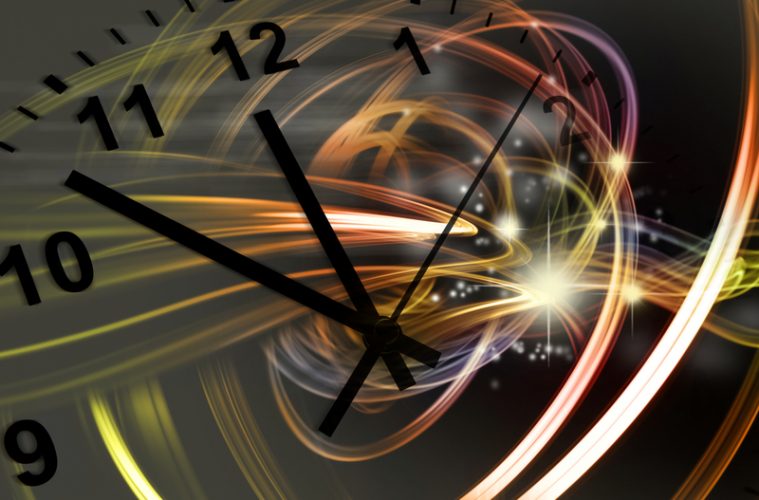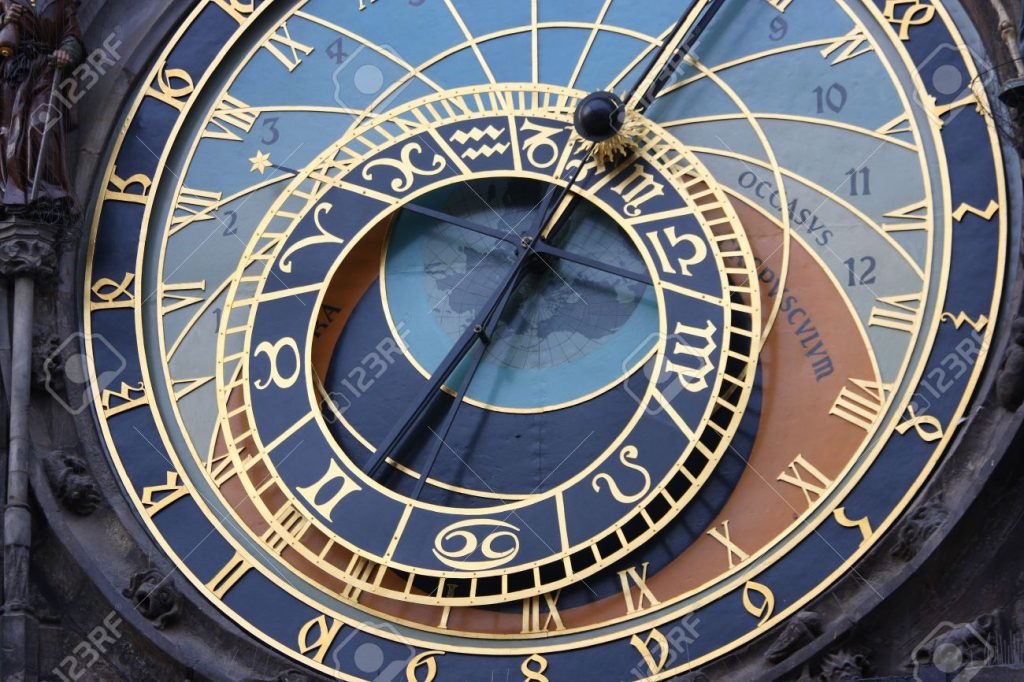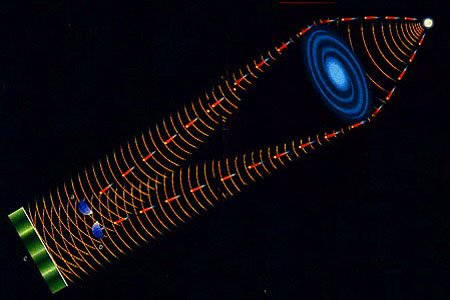
Physicist and Nobel laureate Richard Feynman once said, “We choose to examine a phenomenon which is impossible, absolutely impossible, to explain in any classical way, and which has in it the heart of quantum mechanics. In reality, it contains the only mystery.”
And it’s true. Multiple theories, such as quantum entanglement, have exited the theoretical realm and been confirmed within the mainstream. Even browsing through some previously classified documents in the CIA’s electronic reading room, you can see how Black Budget science confirmed some of these topics decades ago, yet we never heard about it through the mainstream. Here is a prime example of a document on quantum entanglement. From this document we can see that its existence was confirmed decades ago.
What’s also interesting about that document is that it discusses telepathy, a phenomenon directly related to and made possible by discoveries within quantum physics. “Parapsychology” pr “Psi” and quantum physics go hand in hand.
Now, a recent paper, published in Proceedings of The Royal Society A, supports the argument that quantum theory must be “retrocausal,”or that an effect can occur before its cause.
Hard to wrap your head around, isn’t it? But just because something cannot be understood, does not mean it isn’t real, and we shouldn’t dismiss things we don’t understand. This is often seen with concepts like telepathy, even though they’ve been confirmed and verified, if covertly.
Take this document, for example, which examines the “paranormal ability to break through spatial barriers.”
Lis Zyga from Phys.org points out the appeal of retrocausality:
First, to clarify what retrocausality is and isn’t: It does not mean that signals can be communicated from the future to the past—such signaling would be forbidden even in a retrocausal theory due to thermodynamic reasons. Instead, retrocausality means that, when an experimenter chooses the measurement setting with which to measure a particle, that decision can influence the properties of that particle (or another particle) in the past, even before the experimenter made their choice. In other words, a decision made in the present can influence something in the past.
Clearly, if this theory is correct, our concept of “time” is flawed — physical processes can actually run forward and backwards while being described by the same physical laws.
Zyga, however, makes some comments that show a lack of awareness with regards to certain concepts, as she argues that “the whole idea of retrocausality is so difficult to accept because we don’t ever see it anywhere else. The same is true of action at a distance.”
Action at a distance is the idea that physical systems can be moved, changed, or influenced without being physically touched by anything else. It refers to the nonlocal interaction of objects that are separated in space. Again, this has been shown to be a real phenomenon, and it’s been well documented multiple times. So, the statement that “we don’t really see it anywhere else” actually isn’t true.

Another great example, using quantum systems, comes from a paper published in the peer-reviewed journal Physics Essays. It explains how this experiment has been used repeatedly to explore the role of consciousness in shaping the nature of physical reality.
It was published by Dr. Dean Radin, who you will see in the lecture below. He’s the chief scientist at the Institute of Noetic Sciences.
He produced incredible results: Human intention, via meditators, was able to actually collapse the quantum wave function. The meditators were the “observer” in this case.
In fact, as Radin points out in his lecture, a “5 sigma” result was able to give CERN the Nobel Prize in 2013 for finding the Higgs particle (which turned out not to be Higgs after all). In this study, they also received a 5 sigma result when testing meditators against non-meditators in collapsing the quantum wave function. This means that mental activity, the human mind, attention, and intention, which are a few labels under the umbrella of consciousness, compelled physical matter to act in a certain way.

Inspiration and all our best content, straight to your inbox.
“Observations not only disturb what has to be measured, they produce it. . . . We compel [the electron] to assume a definite position. . . . We ourselves produce the results of the measurement.”
If this weren’t true, then why, for example, would the American Institutes for Research arrive at the following conclusion about action at a distance?:
The statistical results of the studies examined are far beyond what is expected by chance. Arguments that these results could be due to methodological flaws in the experiments are soundly refuted. Effects of similar magnitude to those found in government-sponsored research at SRI and SAIC have been replicated at a number of laboratories across the world. Such consistency cannot be readily explained by claims of flaws or fraud.
Even as far back as 1985, a report prepared by the Army Research Institute disclosed that “the data reviewed in this report constitute genuine scientific anomalies for which no one has an adequate explanation for.”
This new paper, published by Matthew S. Leifer from Chapman University in California and Mathew F. Pusey from the Perimeter Institute for Theoretical Physics in Ontario, Canada, wanted to find out if time, like matter, behaves differently at the quantum scale.
The researchers developed a model, based on action at a distance, where they exchanged space for time. So, as entanglement shows, there is really no separation between objects, or information is actually travelling faster than the speed of light. But, if causality ran backwards, this would posit that the particle in the present could actually affect the particle that it was/is entangled with, back through time. Meaning that, not only are two particles connected, showing that space is just the concept that provides the illusion of separation, they are also still “entangled,” regardless of time, which is why there are quantum theories predicting that what happens in the present can actually change what happened in the past.
The Delayed Choice/Quantum Eraser
The delayed choice/quantum eraser experiment has been used multiple times, as well as repeated, to show how time doesn’t exist in the way we currently understand it. In 2007, (Science 315, 966, 2007) scientists in France shot photons into an apparatus and showed that their actions could retroactively change something which had already happened.
As Asher Peres, a pioneer in quantum information theory, once pointed out: “If we attempt to attribute an objective meaning to the quantum state of a single system, curious paradoxes appear: quantum effects mimic not only instantaneous action-at-a-distance, but also, as seen here, influence of future actions on past events, even after these events have been irrevocably recorded.”
Wheeler’s Cosmic Scale Explanation of the Delayed Choice Experiment
 John Wheeler uses a great analogy to illustrate a portion of this concept.
John Wheeler uses a great analogy to illustrate a portion of this concept.
He asks us to imagine a star emitting a photon billions of years ago, heading in the direction of planet Earth. In between, there is a galaxy. As a result of what’s known as “gravitational lensing,” the light will have to bend around the galaxy in order to reach Earth, so it has to take one of two paths, go left or go right. Billions of years later, if one decides to set up an apparatus to “catch” the photon, the resulting pattern would be an interference pattern. This demonstrates that the photon took one way, and it took the other way as well.
One could also “peek” at the incoming photon by setting up a telescope on each side of the galaxy to determine which side the photon took to reach Earth. As we know from the double slit experiment, the very act of measuring or “watching” which way the photon comes in means it can only come in from one side. The pattern will no longer be an interference pattern representing multiple possibilities, but a single clump pattern showing “one” way.
What does this mean? It means how we choose to measure the “now” affects what direction the photon took billions of years ago. Our choice in the present moment affects what has already happened in the past.
Quantum entanglement exists, regardless of time, which means two bits of matter (physical systems) can actually be entangled in time.
Having Trouble Losing Excess Weight?
Having trouble losing excess weight? This could be one of the biggest reasons why.
We know so much about food now yet much of the population is overweight and unhealthy because of the quality of our food and our perception about food.
Luckily there’s a quiz that you can take to find out where you stand on food addiction. You can take it here.
After you will get results and specific information based on your score. Try the quiz!
Source Article from http://feedproxy.google.com/~r/Collective-evolution/~3/EwYvCfzaqB8/
Related posts:
Views: 0
 RSS Feed
RSS Feed

















 September 20th, 2017
September 20th, 2017  Awake Goy
Awake Goy 
 Posted in
Posted in  Tags:
Tags: 
















